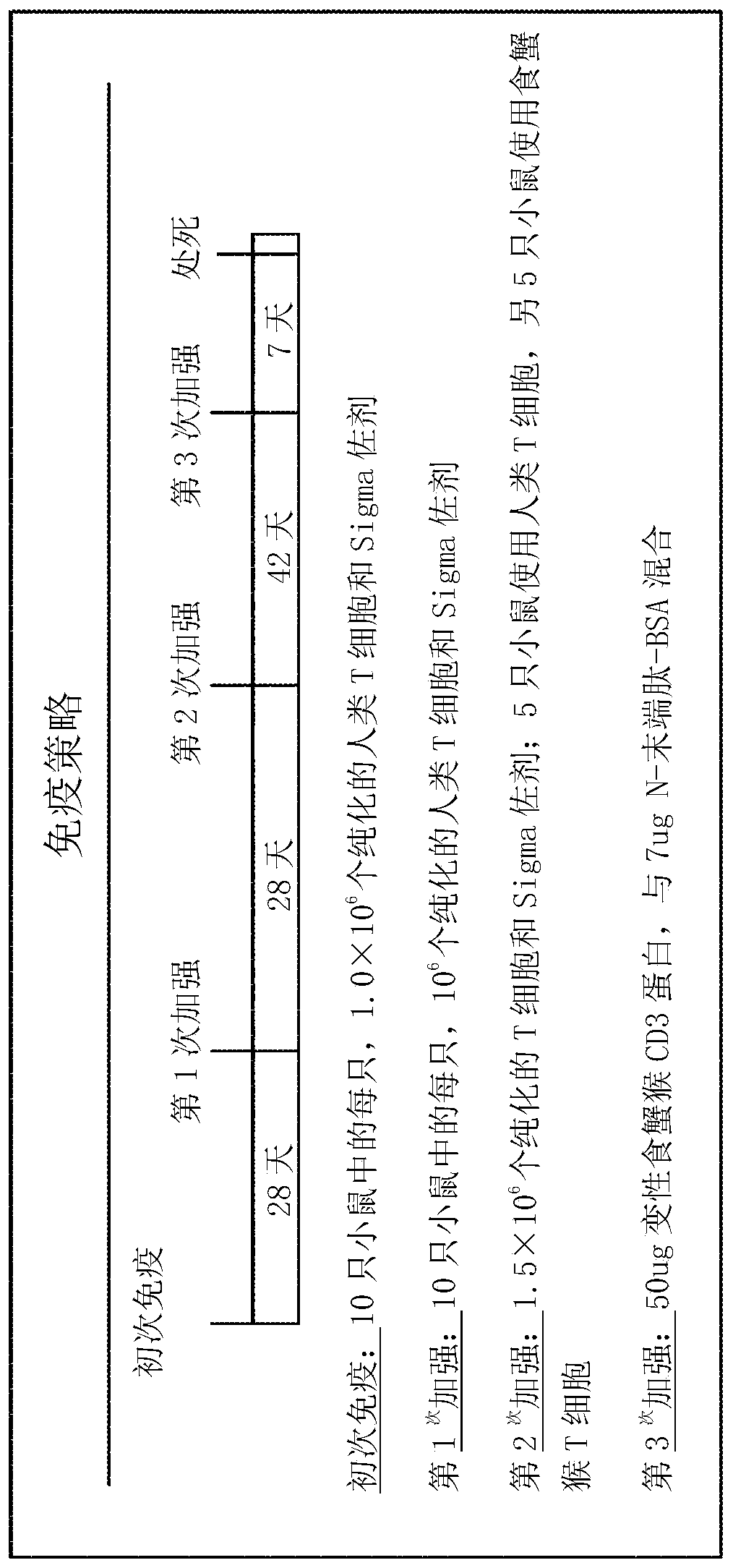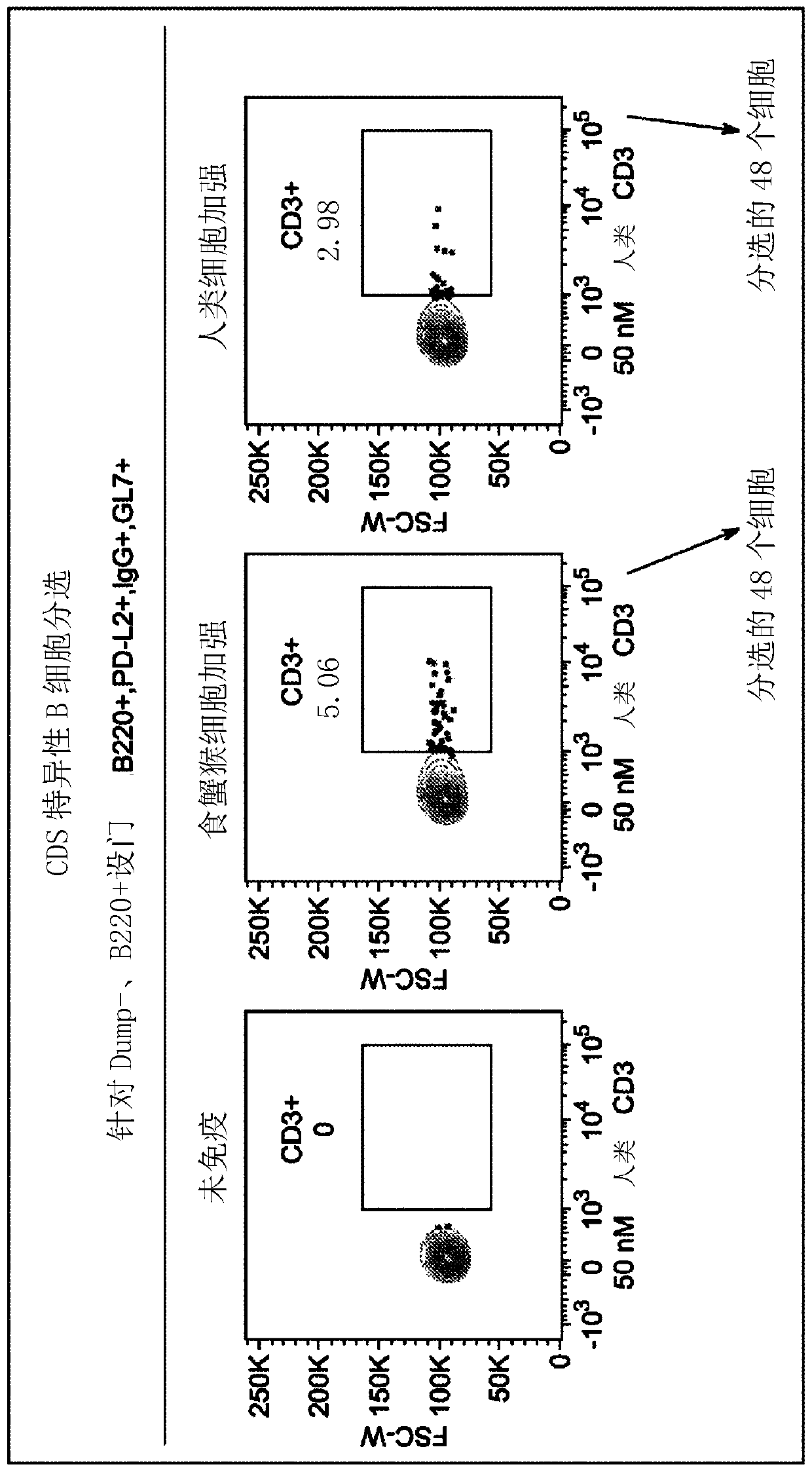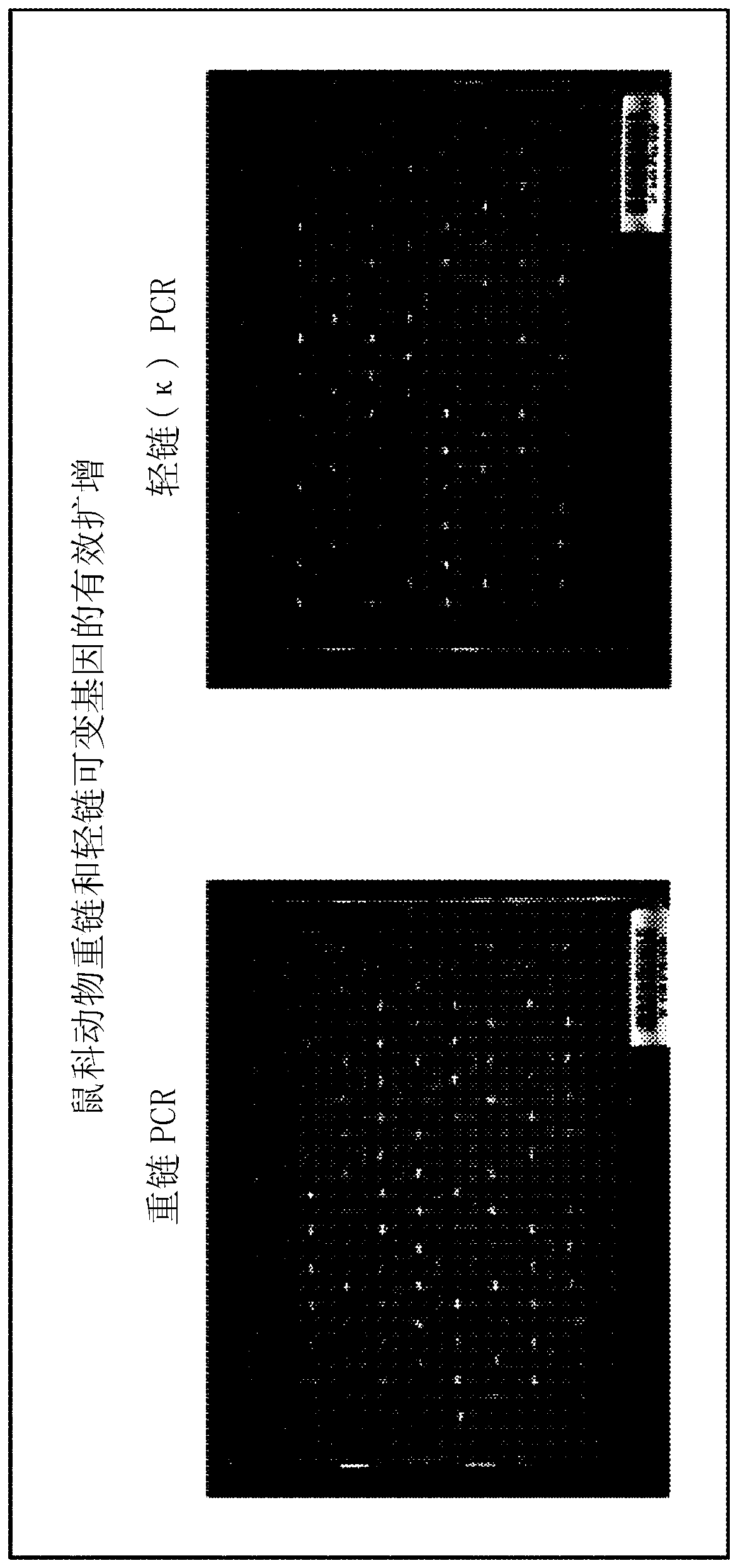Anti-cd3-binding domains and antibodies comprising them, and methods for their generation and use
An antibody and peptide-binding technology, applied in chemical instruments and methods, medical preparations containing active ingredients, antibodies, etc.
- Summary
- Abstract
- Description
- Claims
- Application Information
AI Technical Summary
Problems solved by technology
Method used
Image
Examples
Embodiment 1
[0314] Example 1: Isolation of anti-CD3 antibodies from immunized mice, and generation and isolation of humanized and optimized variants
[0315] Such as figure 1 Immunizations were performed as indicated. Briefly, in each of ten balb / c mice, 1.0 × 10 6 Individual human T cells (expressing CD3ε) and Mice were first immunized with adjuvant. Twenty-eight days after the initial immunization, in each of ten mice, 1.0 × 10 6 Individual human T cells (expressing CD3ε) and Adjuvant for the first booster. Twenty-eight days after the first immunization booster, use 1.5×10 6 T cells (expressing CD3ε) and Ten mice were given a second boost with adjuvant; however, for this second boost, five mice received human T cells (expressing CD3ε) and five mice received cynomolgus monkey (cyno) T cells ( expresses cynomolgus monkey CD3ε). Forty-two days after the second boost, all ten mice received a third boost of fifty micrograms of denatured recombinant cynomolgus CD3ε protein mixed w...
Embodiment 2
[0349] Example 2: Generation of SP34 (anti-CD3) variant antibodies: humanization and optimization of SP34
[0350] Humanization of SP34. Humanization of SP34 was performed by screening an initial panel of humanized designs produced in yeast ( Figure 27 ). Briefly, 28 designs representing combinations of four humanized VHs and seven humanized Vκ or Vλ were generated in yeast and characterized for binding to Hu CD3εδ and Cy CD3εδ Fc. Due to relatively low expression titers, five selected HuSP34 designs were generated by transient HEK and evaluated for recombinant antigen binding, cell staining and developability characteristics of these designs ( Figure 27 ). Among these designs, ADI-16606 (a combination of HC2 and LC3) was chosen with good binding and the cleanest developability profile, as shown by AC-SINS and PSR data. Notably, the background binding to CD3-expressing Jurkat cells (Jurkat CD3+), CD3-unexpressing Jurkat cells (Jurkat CD3-) and Cyno HSC-F was equivalent to...
PUM
 Login to View More
Login to View More Abstract
Description
Claims
Application Information
 Login to View More
Login to View More - R&D
- Intellectual Property
- Life Sciences
- Materials
- Tech Scout
- Unparalleled Data Quality
- Higher Quality Content
- 60% Fewer Hallucinations
Browse by: Latest US Patents, China's latest patents, Technical Efficacy Thesaurus, Application Domain, Technology Topic, Popular Technical Reports.
© 2025 PatSnap. All rights reserved.Legal|Privacy policy|Modern Slavery Act Transparency Statement|Sitemap|About US| Contact US: help@patsnap.com



